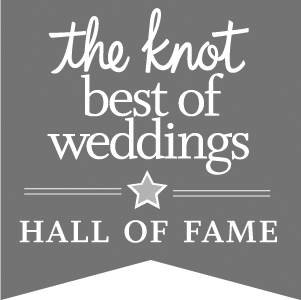
Estate Jewelry vs Vintage Jewelry
So, which is it . . . Antique, Period, Estate, Vintage or Previously Owned?
In most countries, including the United States, any piece of jewelry sold as “antique” must be at least one hundred years old. “Period” refers to various time periods in which a particular style evolves and is popular for a certain span of time, it applies to many areas including art, architecture, and jewelry. Vintage, simply put means “representing the high quality of a past time.” Estate jewelry that is not from a collectible “period” must be referred to simply as previously owned.
To better understand and recognize the types of estate jewelry and the varying styles identified by each era, we have put together the following chronologically arranged descriptions of jewelry periods. We hope our listings will help you better understand and enjoy our collections of beautiful period and estate jewels.
Jewelry termed “vintage” is defined by style and manner of workmanship and spans many eras in time, beginning in the early 1700s. To better understand and recognize the varying styles, we have put together the following chronologically arranged descriptions of vintage jewelry time periods. We hope our listings will help you better understand and enjoy our collections of beautiful vintage and estate jewels.
Georgian Period 1714 – 1837
Jewelry produced during the years Great Britain was ruled by the “four Georges” defines the Georgian Period.
All jewelry produced during this time period was handmade and varied greatly in quality due to the varied skill and materials available.
True Georgian jewelry is very rare.
Floral and scroll motifs were typical of the period.
Greatly influenced by nature, this style often incorporates flowers, leaflets, insects, birds, feathers, and ribbons.
Victorian Period 1837 – 1901
Queen Victoria, the reigning monarch of Great Britain during this time-period, was the guiding force in jewelry design hence the “Victorian” period.
Romantic and sentimental embellishments were the central theme and included varied and eclectic motifs composed almost exclusively in gold.
The Industrial Revolution during this time brought with it the invention and development of new tools and the ability to mine precious gemstones and metals. The result was mass production.
The middle classes fueled the demand and the appeal for personal adornment was explosive. Influences include Egyptian, Renaissance, and Etruscan.
Art Nouveau 1890 – 1915
Influenced by the Symbolist movement, natural forms inspired Art Nouveau Jewelry.
Popular designs included female forms, water lilies, flowers, vines, dragonflies, and beasts.
Frenchman Rene Jules Lalique and American Comfort Tiffany were best known for their designs of Art Nouveau Jewelry.
Yellow gold was the metal of choice.
The “plique-a`-jour” method using translucent enamel framed with gold, evoking the look of stained glass, was especially popular.
Edwardian Belle Epoch Period 1890 – 1915
This period was during the reign of King Edward Vlll.
Lavish jewels of the period were delicate, romantic, feminine, and lacy.
The highly detailed workmanship featured garlands, wreaths, bows, and tassels with open designs of scalloped edges and milgrain.
Platinum was the metal of choice because it could be fashioned into thin, lightweight designs but still be sturdy.
Diamonds, as well as natural pearls, were the most often used gemstones.
Art Deco Period 1915 – 1935
The modern age was ushered in during the Art Deco Period.
Jewelry designs had an “architectural appearance” with strong geometric, symmetric lines and patterns.
White metals reigned, accompanied by rubies, sapphires, emeralds, and onyx.
Some of the most famous designers of Art Deco jewelry were French, including Cartier, Boucheron, and Fouquet.
Retro Modern Period 1940’s
Inspired by Hollywood glamour, large flamboyant designs featuring curves, bows and ribbons were popular design themes.
Rose, yellow and green gold were the metals of choice because of the scarcity of platinum due to the war’s demands on supply.
Large gemstones captured the spotlight of many designs including aquamarine, amethyst, and citrine as well as rubies.
The use of synthetic gemstones became popular during the era.
Much in this era was manufactured in the United States.
1950s Jewelry: A Glamorous Era
The mid-century period saw the rise of atomic and space age influences in jewelry design, characterized by striking, larger pieces reflecting the post-WWII economic boom. The rise of television spread fashion trends, with jewelry symbolizing status, sophistication, and style. Icons like Marilyn Monroe, Elizabeth Taylor, and Audrey Hepburn popularized elegant, feminine styles, making pearls a must-have. Costume jewelry became accessible, with Coco Chanel promoting faux pearls and colored stones. Materials like lucite, bakelite, and rhinestones were common, alongside yellow gold with textures and twists. Popular items included ear clips, bib or fringe necklaces, bangles, watch bracelets, and diamond wrist huggers. Jewelry sets, pearl chokers, and floral or nature-inspired brooches were fashionable. The space race inspired designs featuring starbursts, sunbursts, and rocket motifs. Large center stones and marquise-cut diamonds made a comeback in cocktail rings, often clustered with diamonds or colored stones.
1960s Jewelry: Loud, Experimental, and Iconic
The 1960s jewelry scene was heavily influenced by the space age, science fiction, and the pop art movement, leading to artistic and experimental designs. This era saw a distinct split in jewelry categories: valuable pieces kept in banks and fun, wearable costume jewelry made from low-cost materials. The pop art movement popularized monochromatic and black-and-white palettes, while vibrant colors were achieved with affordable materials like resin, vinyl, and Perspex. The hippie movement brought "flower power," leading to a surge in floral jewelry, and pierced ears became socially acceptable, making large earrings and shorter hairstyles popular to highlight the neck and ears. Huge cocktail rings made dramatic statements, characterized by asymmetrical geometric designs, bright colors, oversized stones, and enamel work.
Minimalism thrived with geometric designs inspired by the space age, featuring materials like colored plastic, resin, pearls, and yellow gold. Textured, hammered surfaces were common, and affordable options like Bakelite, Catalin, paper, PVC, Lucite, and leather were widely used. Geometric shapes, psychedelic jewelry with vibrant colors, uncut gemstones, and cluster-style pieces were all the rage. Turquoise was introduced in high-end jewelry, and twist styles and jagged, broken outlines were popular motifs. This era's jewelry is a testament to the experimentation and rejection of tradition that defined the 1960s.
1970s Jewelry: Bohemian, Adventurous, and Culturally Rich
The 1970s jewelry scene was a mix of influences from Woodstock, rock music, and antiwar protests, with a strong touch of inspiration from India. This era saw a relaxed fashion approach, as high fashion struggled amidst economic shifts. Rock stars dictated trends, and high fashion reflected their style. Gold was relatively inexpensive in the early '70s, leading to its widespread use in jewelry. Political activism and Afrocentric designs, such as black fist symbols and African contours, became prominent, reflecting cultural pride and activism.
Disco's influence brought oversized medallions, chunky gold chains, shimmering metallics, and oversized gems. Layering jewelry became popular, with stacking rings and bracelets complementing turtlenecks and plunging necklines. Natural materials, especially wood, were favored for pendants and bracelets, embodying the Bohemian trend and Eastern and tribal influences. Stones in both polished and rough forms, shells, and bones were widely used, and earthy tones like turquoise, terracotta, olive, yellow, burnt orange, and green were popular, channeling an organic feel. This decade's jewelry is a testament to the era's shamelessness, cultural richness, and political consciousness.
1980s Jewelry: Bold, Colorful, and Unapologetically Maximalist
The 1980s jewelry scene was defined by maximalism, with bold, statement pieces taking center stage. Multistrand pearl necklaces and stacked bracelets, now made from affordable materials like plastic, became fashion staples. Charm and friendship bracelets emerged as popular trends, a style that continues to resonate today. Advancements in jewelry manufacturing enabled the production of more affordable pieces. Electroforming and hollow chains were an inexpensive way to get a massive look without the weight and expense. Plastic began to be used as mounting for precious gemstones. These different manufacturing techniques made stylish pieces more accessible to a wider audience.
Materials such as plastic, acrylic, and resin were commonly used to create vibrant, colorful pieces with geometric shapes. Large hoop earrings and chunky gold chains, influenced by hip hop culture, were highly fashionable. Brooches made a notable comeback, and asymmetric earrings broke away from conventional styles, offering a fresh and modern twist. The 1980s jewelry is a testament to the era's bold, colorful, and unapologetically maximalist approach to fashion.
1990s Jewelry: Eclectic, Spirited, and Culturally Influenced
The 1990s jewelry scene was eclectic, reflecting the diverse cultural movements of the decade. Youth accessories were often inexpensive, with handmade friendship bracelets and plastic rings found in cereal boxes. The hip hop movement popularized the term "bling," with artists like Notorious B.I.G., Jay-Z, and LL Cool J flaunting chunky gold chains, diamond pendants, and large medallions. Grunge bands like Nirvana and Pearl Jam led a darker, rebellious aesthetic, making chokers of leather and velvet staples in the scene.
Body jewelry rose in popularity as a form of self-expression, with eyebrow and nose piercings making a more daring statement. Mood rings and beaded jewelry, often made from plastic or glass beads, were widely used to create bracelets, necklaces, and anklets. The preppy style favored more conservative pieces like bead necklaces and shell chokers, while nameplate jewelry emerged as a significant trend. The goth subculture embraced jewelry featuring skull motifs and black leather, often accessorizing with vintage or antique pieces. Princess Diana, a fashion icon of the era, frequently sported pearl chokers, adding a touch of elegance to the decade's diverse styles. The 1990s jewelry aesthetic was eclectic, blending playful and bold designs with dark, rebellious elements and elegant touches.


















